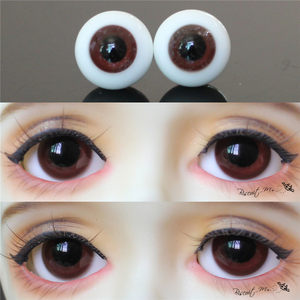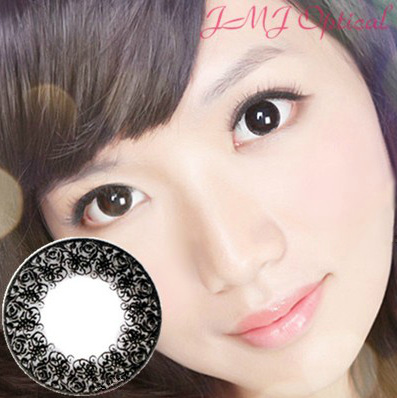Imagine you have to give a speech, but instead of looking down at your notes, the words scroll right in front of your eyes no matter which direction you look.
It’s just one of many features the smart contact lens maker promises to offer in the future.
“Imagine…you’re a musician and your lyrics or chords are right in front of your eyes. Or you’re an athlete and you have your biometrics, distance and other information you need,” Steve Zink Lai said, from Mojo, who develops smart contact lenses.
How To Put In Contact Lenses
His company is about to begin full-scale testing of human-based smart contact lenses, which will give wearers a heads-up display that appears to float in front of their eyes.
The product’s scleral lens (a larger lens that extends to the white of the eye) corrects the user’s vision, while also integrating a tiny microLED display, smart sensors and solid-state battery.
“We’ve built what we call a fully functional prototype that actually works and is wearable – we’ll be testing it in-house soon,” Mr Sinclair said.
“Now for the fun part, we start optimizing for performance and power and wear it for a long time to prove that we can wear it all day.”
Lenses may “include the ability to self-monitor and track intraocular pressure or glucose,” said Rebecca Rojas, a lecturer in optometry at Columbia University.For example, people with diabetes need to monitor blood sugar levels closely.
“They could also offer extended-release drug delivery options, which can be beneficial for diagnostics and treatment planning. It’s exciting to see how far the technology has come and the potential it offers to improve patients’ lives.”
By tracking certain biomarkers, such as light levels, cancer-related molecules or the amount of glucose in tears, research makes lenses that can diagnose and treat medical conditions ranging from eye disease to diabetes and even cancer.
For example, a team at the University of Surrey has created a smart contact lens that contains a photodetector to receive optical information, a temperature sensor to diagnose underlying corneal disease and a glucose sensor to monitor glucose levels in tears.
“We made it ultra-flat, with a very thin mesh layer, and we could put the sensor layer directly on the contact lens, so it could directly touch the eye and make contact with the tear fluid,” said Yunlong Zhao, an energy storage lecturer. and Bioelectronics at the University of Surrey.
“You’ll find it more comfortable to wear because it’s more flexible, and because it’s in direct contact with the tear fluid, it can provide more accurate sensing results,” Dr. Zhao said.
One challenge is to power them with batteries, which obviously have to be very small, so can they provide enough power to do anything useful?
How To Put In Contact Lenses
Mojo is still testing its products, but wants customers to be able to wear its lenses all day without having to charge them.
“The expectation [is] that you’re not constantly getting information from the footage, but for short periods of time during the day.
“Actual battery life will depend on how and how often it’s used, just like your smartphone or smartwatch today,” a company spokesperson explained.
Other concerns about privacy have been rehearsing since Google launched its smartglasses in 2014, which is widely seen as a failure.
“Any concealed device with a front-facing camera that allows the user to take a photo or record a video poses a risk to the privacy of bystanders,” said Daniel Leufer, senior policy analyst with the Access Now digital rights movement.
“With smart glasses, there is at least some room to signal to bystanders when recording — for example, a red warning light — but with contact lenses, it’s more difficult to see how to integrate such a feature.”
In addition to privacy concerns, manufacturers can also address wearer concerns about data security.
Smart lenses can only function if they track the user’s eye movements, and that, along with other data, can reveal a lot.
“What if these devices collect and share data about what I look at, how long I look at them, whether my heart rate increases when I look at someone, or how much I sweat when asked a certain question? ‘ said Mr. Lever.
“This type of intimate data can be used to make questionable inferences about everything from our sexual orientation to whether we tell the truth at interrogation,” he added.
“My concern is that devices such as AR (augmented reality) glasses or smart contact lenses will be seen as a potential treasure trove of private data.”
Also, anyone with regular exposure will be familiar with the product.
“Contact lenses of any type can pose a risk to eye health if not properly cared for or worn.
“Like any other medical device, we need to ensure the health of our patients is our number one priority, and no matter what device is used, the benefits outweigh the risks,” said Ms Rojas from Columbia University.
“I am concerned about non-compliance, or poor lens hygiene and overfitting. These can lead to further complications such as irritation, inflammation, infection or risk to eye health.”
With Mojo’s lenses expected to last up to a year at a time, Mr Sinclair admitted that was a concern.
But he noted that the smart lens means it can be programmed to detect if it’s been cleaned sufficiently and even alert the user when it needs to be replaced.
“You don’t just launch something like a smart contact lens and expect everyone to adopt it on day one,” Mr Sinclair said.
“It will take some time, like all new consumer products, but we think it’s inevitable that all of our glasses will eventually become smart.”
Post time: Jun-14-2022





